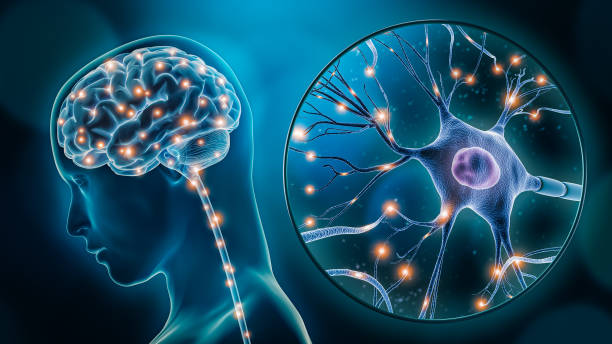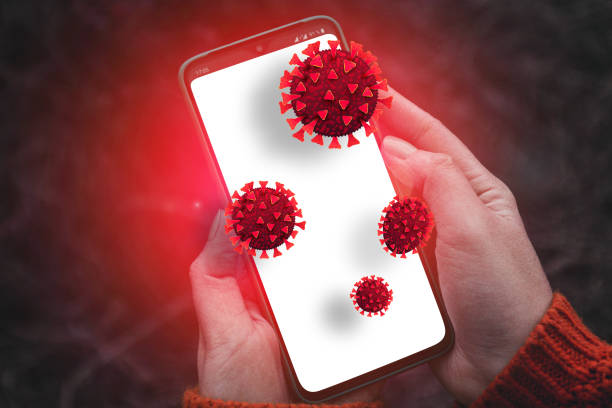Chronic stress-related neurons identified
Researchers at Karolinska Institutet in Sweden have identified a group of nerve cells in the mouse brain that are involved in creating negative emotional states and chronic stress. The neurons, which have been mapped with a combination of advanced techniques, also have receptors for oestrogen, which could explain why women as a group are more sensitive to stress than men. The study is published in Nature Neuroscience.
Just which networks in the brain give rise to negative emotions (aversion) and chronic stress have long been unknown to science.
By using a combination of advanced techniques, such as Patch-seq, large-scale electrophysiology (Neuropixels) and optogenetics (see factbox), KI researchers Konstantinos Meletis and Marie Carlén and their team have been able to map out a specific neuronal pathway in the mouse brain leading from the hypothalamus to the habenula that controls aversion.
The researchers used optogenetics to activate the pathway when the mice entered a particular room, and found that the mice soon started to avoid the room even though there was nothing in it.
Opens the way for novel treatments for depression
“We discovered this connection between the hypothalamus and the habenula in a previous study but didn’t know what types of neurons the pathway was made up of,” says Konstantinos Meletis, professor at the Department of Neuroscience, Karolinska Institutet. “It’s incredibly exciting to now understand what type of neuron in the pathway controls aversion. If we can understand how negative signals in the brain are created, we can also find mechanisms behind affective diseases like depression, which will open the way for novel drug treatments.”
The study was led by three postdocs at the same department, Daniela Calvigioni, Janos Fuzik and Pierre Le Merre, and as Professor Meletis explains, is an example of how scientists can use advanced techniques to identify neuronal pathways and neurons that control emotions and behaviour.
Sensitive to oestrogen levels
Another interesting discovery is that the neurons linked to aversion have a receptor for oestrogen, making them sensitive to oestrogen levels. When male and female mice were subjected to the same type of unpredictable mild aversive events, the female mouse developed a much more lasting stress response than the male.
“It has long been known that anxiety and depression are more common in women than in men, but there hasn’t been any biological mechanism to explain it,” says Marie Carlén, professor at the Department of Neuroscience. “We’ve now found a mechanism that can at least explain these sex differences in mice.”
The study was mainly financed by the Knut and Alice Wallenberg Foundation, the Swedish Research Council, the Swedish Brain Foundation and the David and Astrid Hagelén Foundation. The researchers report no potential conflicts of interest.
Factbox: Here are the techniques used
Patch-seq: Patch-seq combines measurements of the electrical properties of individual cells with measurements of gene expression (RNA sequencing) and makes it possible to map the different types of neurons in the brain.
Neuropixels: The Neuropixels probe is a new type of electrode for large-scale electrophysiological measurements that makes it possible record the activity of hundreds of individual neurons simultaneously.
Optogenetics: Optogenetics is used to control how and when selected neurons are active. The method involves introducing light-sensitive proteins (such as channel proteins from the membranes of single-cell organisms) into the neurons to be studied. Light can then be used to control individual cell types in the mouse brain to ascertain their function.
Full bibliographic information
Published on 22/06/2023 by Karolinska Institutet
Publication: “Esr1+ hypothalamic-habenula neurons shape aversive states”,
Authors: Daniela Calvigioni, Janos Fuzik, Pierre Le Merre, Marina Slashcheva, Felix Jung, Cantin Ortiz, Antonio Lentini, Veronika Csillag, Marta Graziano, Ifigeneia Nikolakopoulou, Moritz Weglage, Iakovos Lazaridis, Hoseok Kim, Irene Lenzi, Hyunsoo Park, Björn Reinius, Marie Carlén, Konstantinos Meletis. Nature Neuroscience, online 22 June 2023,
DOI: 10.1038/s41593-023-01367-8.
https://www.nature.com/articles/s41593-023-01367-8





